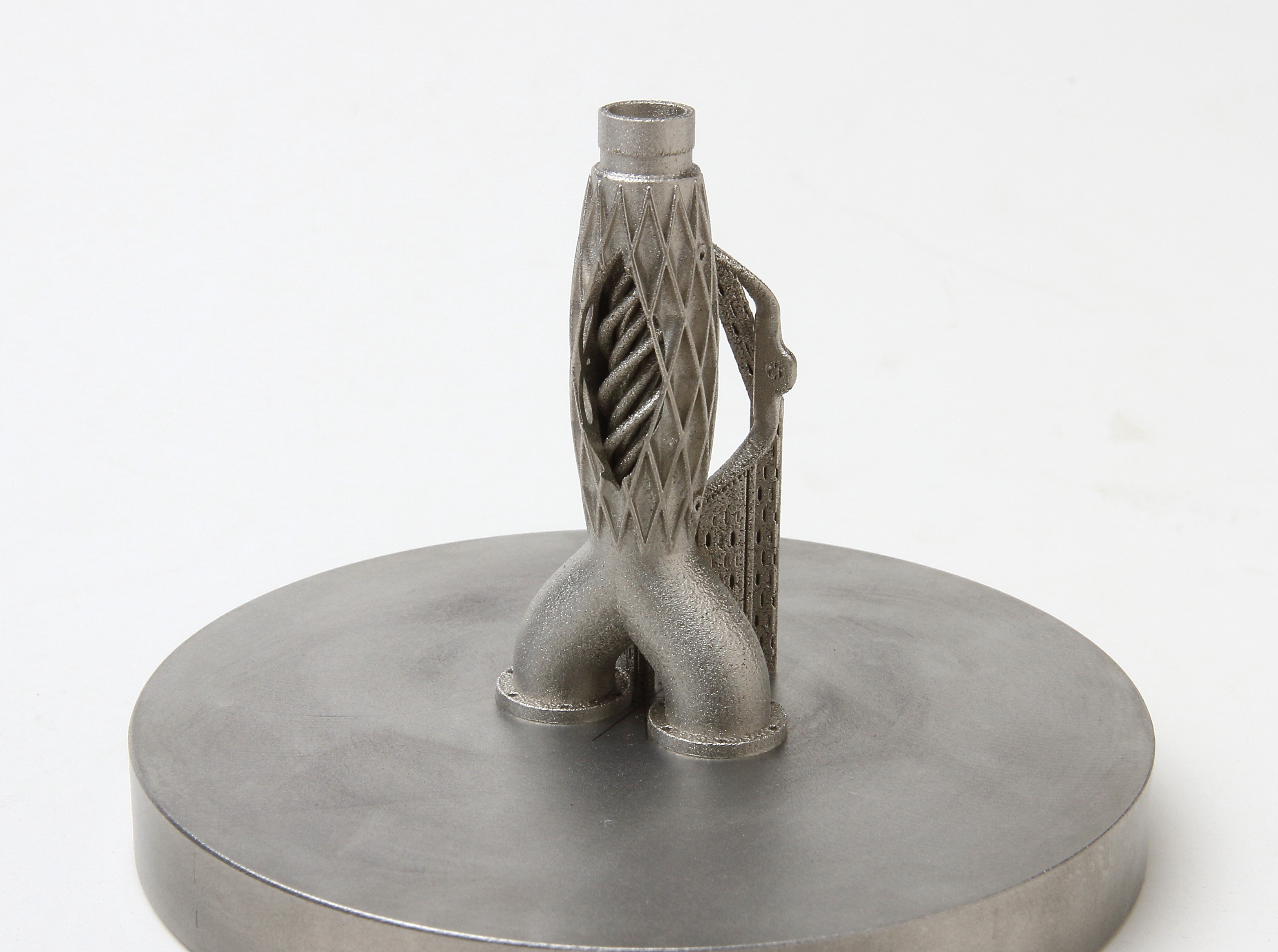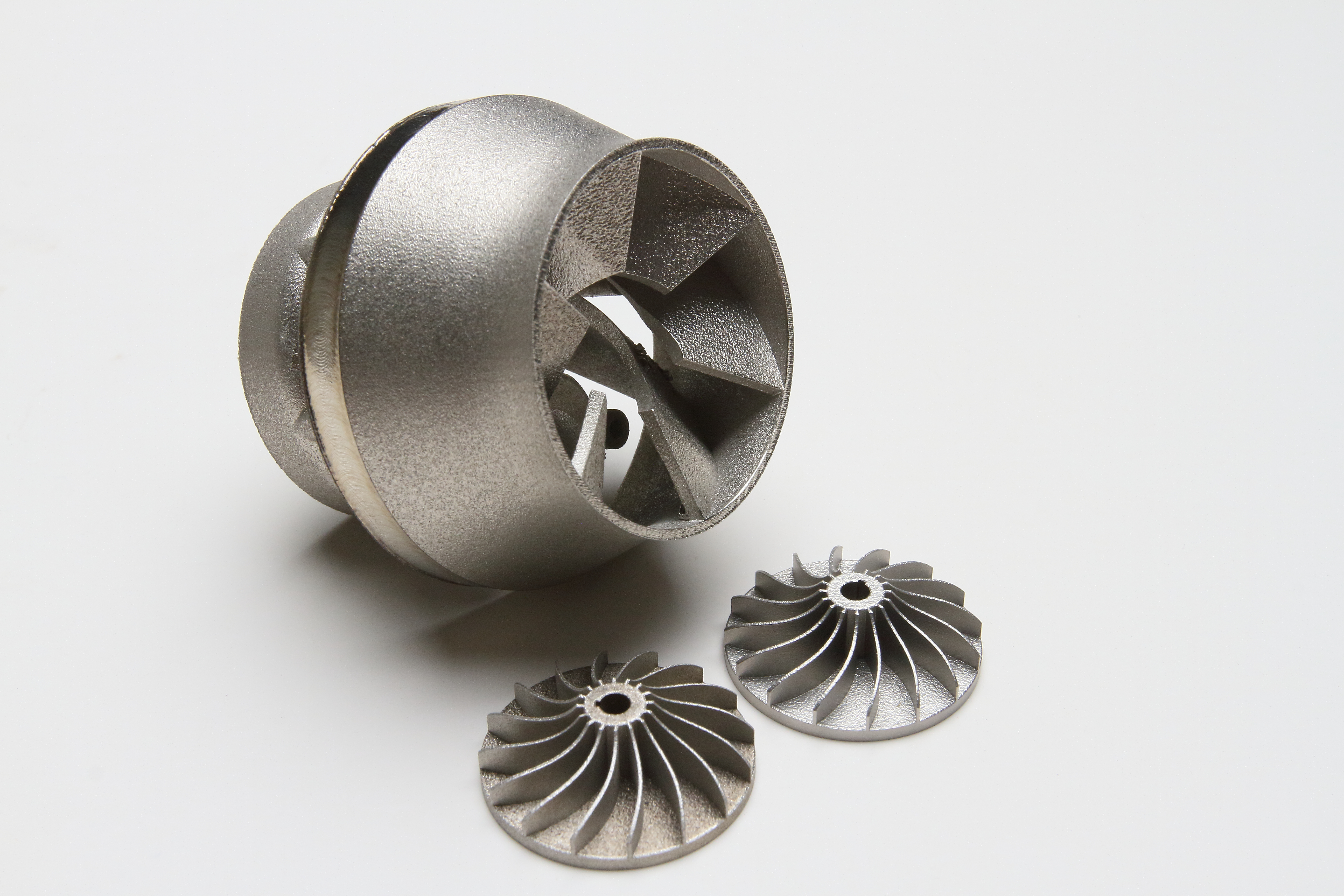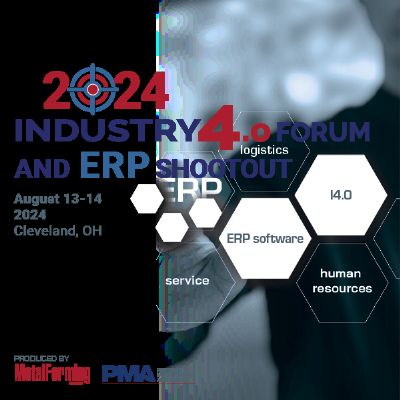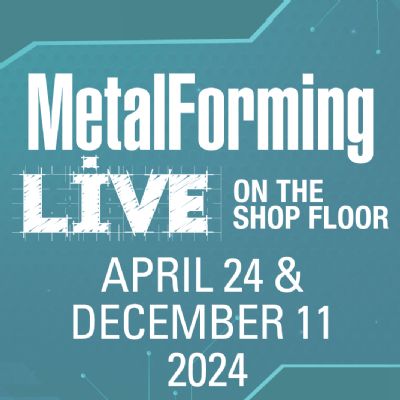“Once we developed the process parameters for printing nickel, we continued to fine-tune the process to push the edge of the technology,” Metsger continues, “in terms of surface finish and feature size. We can print parts with hole diameters as small as 0.006 in., and think we can get better still.”
Asked what process parameters have received his attention, Metsger emphasizes the importance of argon-gas flow through the build chamber to minimize spatter and ensure that powder particles fall precisely where they’re supposed to; beam compensation; and the precise particle-size makeup of the nickel powder.
“On top of that,” he adds, “since nickel is such a great thermal conductor, managing the printing process to avoid overheating is a challenge. It’s not been an easy process to perfect, but with the help of Trumpf’s technical team we’ve been pretty successful.” The result: practically zero post-processing is required, due to the ability of Tronix3D to print part surfaces that do not require polishing or sanding. “Such a fine surface finish also helps with depowdering,” Metsger shares, “particularly important since 0.006-in.-dia. holes can create quite a depowdering challenge.”
Machine #2: Precious Metals, GrCop-84

|
| Tronix3D printed this pure-nickel heat exchanger, about 60 mm tall, with an inner coiling that maximizes efficiency by optimizing the surface area while adding the ideal properties of pure nickel for thermal conductivity. |
Experiencing immediate success with its first TruPrint, the firm added its second Trumpf TruPrint 1000 late in 2020, and has expanded beyond printing nickel electronic components to take on aerospace projects. As an example, Metsger and his team have completed several projects printing GrCop-84, a high-strength high-conductivity alloy commonly used in high-heat (to 1300 F) applications including parts in rocket-engine combustion chambers.
Also gaining favor at Tronix3D: the ability, using what Trumpf calls its “jewelry package,” to set up the TruPrint with a greatly reduced build-plate diameter. With that option, users can reduce the build plate and volume by two-thirds. Tronix3D leverages that capability to develop procedures for printing expensive precious metals, to help minimize waste and reduce costs.
Next Up: Process Validation
What’s next for Tronix3D? “If you want to be a contract manufacturer in AM, and in particular want to win government and military work,” says Helfferich, “process and quality repeatability are a must. And that in turn requires monitoring and collecting data relative to the entire process—internal to the printing process, as well as the shop environment. Trumpf has given us access to the real-time machine data during the builds, layer by layer, and we are using IoT sensors in our facility to monitor temperature, humidity and even the quality of the power coming into the machines. We have the infrastructure in place, and we’re at the early stages of being able to analyze and react to the data.”
Along those lines, late in 2020 Tronix3D announced that it had completed a successful demonstration of this capability as part of the National Center for Defense Manufacturing and Machining’s AMNOW Program, a multi-year contract program focused on developing and validating a prototype digital AM supply chain. With an audience comprising representatives from the U.S. Army Combat Capabilities Development Command and program partner LECS Energy LLC, Tronix3D showcased the implementation of LECS Energy’s Learning Integrated Manufacturing System, a process data-collection technology.
“One of the hurdles to widespread use of AM for military projects is the lack of a pathway for awarding contracts,” Helfferich says, “due to a lack of a standard set of data to enable part certification. We believe that it’s not sufficient, in order to render AM parts as certified, to verify that we’re using a specific printer and process parameters. The data goes way beyond what’s inside the machine.”
For collecting and analyzing the data, while ensuring optimum cybersecurity, Tronix3D has opted to combine the capabilities of two software packages—Paperless Parts (the front-end experience to the customer for quoting, among other modules), and ProShop, an ERP system prevalent in the machining industry for aerospace applications and now crossing over into the AM world, says Helfferich.
“We’re working closely with these software products, along with the requirements of cybersecurity," he says, "to provide the entire picture that supports AM parts qualification.”
Want more leading-edge stuff? “We can embed programmable nanoparticles into the parts during printing,” shares Metsger, “to provide full traceability. We’re in the beginning stages of this technology, which ultimately will allow us to trace anything we produce back to the day it was produced, the individual part, the full data set, etc.” 3DMP
Industry-Related Terms: Bed,
Center,
Conductivity,
Corrosion Resistance,
Edge,
LASER,
Layer,
Lines,
Plate,
Polishing,
Prototype,
Spatter,
Stainless Steel,
SurfaceView Glossary of Metalforming Terms
See also: TRUMPF Inc.
Technologies:
 Brad Kuvin
Brad Kuvin








 Event
Event